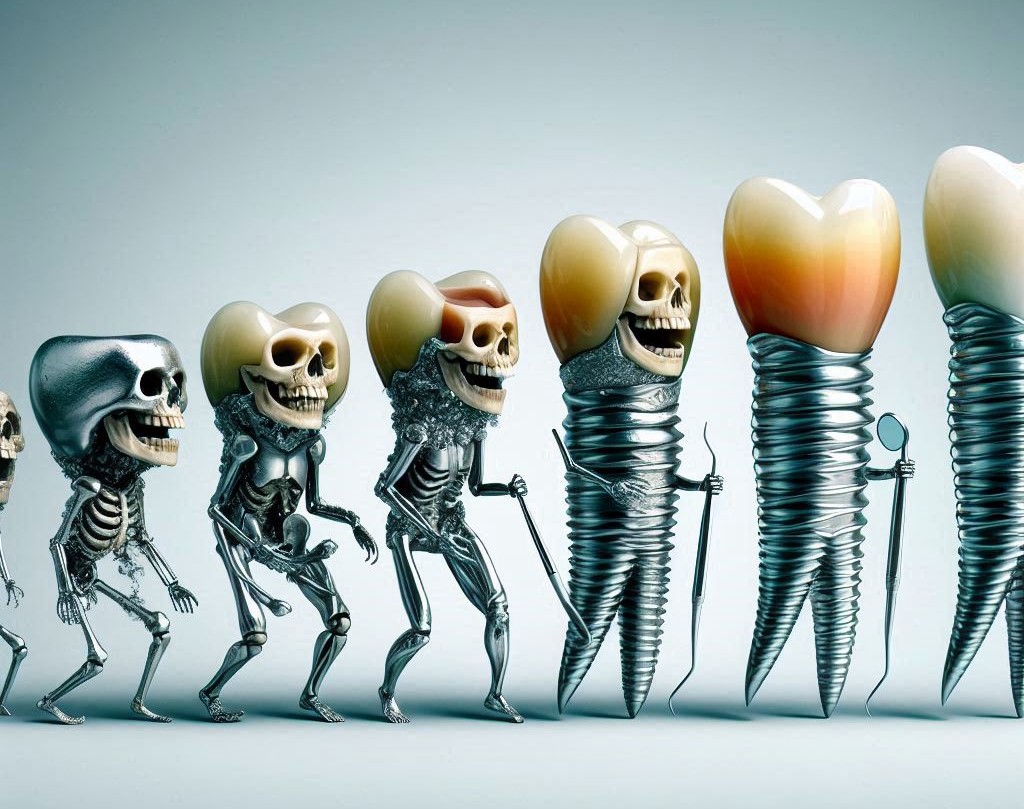Porcelain fillings have emerged as one of the most sought-after dental restoration options, especially for patients concerned with both aesthetics and long-term durability. For many people, the idea of restoring a tooth without compromising its natural appearance is incredibly appealing. When it comes to front teeth, where visibility plays a critical role in maintaining a confident smile, porcelain fillings stand out as an excellent choice. However, like all dental materials, porcelain fillings come with their own set of advantages and limitations that make them suitable for certain situations and less ideal for others.
In this guide, we will delve deep into the reasons why porcelain fillings are a popular option for front teeth, explore their benefits and limitations, and compare the cost of porcelain fillings with other dental materials. Whether you are considering porcelain fillings for your own dental needs or are simply curious about this restoration method, this article will provide a comprehensive understanding of porcelain fillings.
Why Are Porcelain Fillings Popular for Front Teeth?
The primary reason porcelain fillings are especially favored for front teeth is their ability to match the natural appearance of the tooth. The front teeth are exposed to the highest scrutiny, and patients want fillings that blend seamlessly with their natural smile. Below are the factors contributing to the popularity of porcelain in front tooth restorations:
Aesthetic Superiority
Porcelain fillings stand out for their esthetic quality. The material is a highly translucent ceramic that mirrors the properties of natural tooth enamel. Enamel itself is semi-translucent and can reflect light in a natural way, creating a subtle depth. Porcelain is formulated to replicate these properties, making it the preferred choice for people who want an imperceptible filling in the front of their mouth.
- Match to Natural Tooth Color: One of the primary reasons patients opt for porcelain fillings is their customizability. The dentist can match the porcelain to the precise color of your natural teeth, ensuring a seamless result.
- Translucency and Luster: Unlike metals or other materials, porcelain has an inherent ability to reflect light the way enamel does. This natural quality makes porcelain fillings blend in better, especially in the front teeth.
Stain Resistance
Porcelain is highly resistant to staining from foods, drinks, and other substances that can discolor composite fillings or other dental materials. The non-porous surface of porcelain ensures that the filling remains bright and resistant to discoloration, a key consideration for front teeth that are visible when smiling or talking.
- Durability of Stain Resistance: While composite fillings can discolor over time, porcelain retains its original color and sheen for years, maintaining the appearance of the restoration without the need for frequent touch-ups or replacements.
Durability for Moderate Chewing Pressure
Although porcelain is not as durable as gold or some other materials when placed in the back teeth (where chewing forces are stronger), it is sufficiently durable for front teeth. These teeth do not undergo the same level of pressure as molars, making porcelain fillings an excellent choice for aesthetics without sacrificing functional performance.
- Longevity of Porcelain Restorations: Properly crafted and maintained porcelain fillings can last 10 to 15 years, or even longer, with the right care. This longevity makes porcelain fillings a worthwhile investment for front teeth restoration.
Biocompatibility
Porcelain is highly compatible with the human body, meaning it rarely causes allergic reactions or irritation to the gums or surrounding tissues. This is particularly important for patients who may have sensitivities to metals or certain synthetic materials.
- Non-Toxicity: Many patients prefer porcelain fillings because they are made from non-toxic, natural ceramic materials. This makes them suitable for patients who are concerned about the possible side effects of other dental filling materials.
Benefits of Porcelain Fillings
Aesthetic Quality
The most compelling benefit of porcelain fillings lies in their visual appeal. The ability to customize the color and texture of the filling to match the natural tooth color allows for a nearly invisible repair. Whether the tooth is slightly chipped, cracked, or has a cavity, porcelain can restore it to look like new.
- Natural Appearance: When placed properly, porcelain restorations can be indistinguishable from the surrounding teeth, even when viewed up close. This makes porcelain ideal for visible areas, especially the upper incisors, canines, and premolars.
Strength and Resistance to Wear
Porcelain is known for its strength and resistance to wear. While not as tough as gold or zirconia, porcelain is highly resistant to cracks and fractures in typical daily wear and tear. It can withstand the forces of chewing and biting in the front teeth, making it suitable for most restorations.
- Longevity: Porcelain’s resistance to wear means that it maintains its strength and durability for many years. For patients who invest in porcelain fillings, they can expect to enjoy long-term restoration without the need for frequent replacements.
Better Protection for the Tooth
Unlike amalgam or composite fillings that may require larger cavities to be drilled out for a successful placement, porcelain fillings can be more conservatively designed. Dentists can preserve more of the natural tooth structure when placing porcelain restorations, maintaining its overall integrity and preventing unnecessary tooth removal.
- Bonding: Porcelain fillings are bonded directly to the tooth using dental adhesive, which provides additional support to the natural tooth structure. This bonding process also reinforces the strength of the treated tooth, protecting it from potential cracks or fractures.
Low Risk of Sensitivity
Since porcelain fillings are custom-made and applied precisely to the cavity, there is minimal risk of post-treatment sensitivity. The bond formed between the porcelain and the tooth is tight and secure, reducing the likelihood of air, cold, or heat exposure causing pain or discomfort.
- Prevention of Post-Treatment Issues: Unlike some other materials, porcelain fillings are less likely to cause the gum irritation or sensitivity issues that can sometimes occur with composite or amalgam fillings.
Resistance to Plaque and Bacteria
The smooth surface of porcelain makes it resistant to plaque buildup and bacteria accumulation. This reduces the risk of future cavities or gum disease, especially in cases where a filling is placed to restore a tooth’s function.
- Better Oral Hygiene: Maintaining oral hygiene is easier with porcelain fillings, as the smooth surface reduces the chances of food and bacteria sticking to the filling. This can help patients maintain better overall oral health.
Limitations of Porcelain Fillings
While porcelain fillings offer a range of benefits, there are some limitations and considerations to keep in mind.
Higher Cost
Porcelain fillings are more expensive than alternatives such as amalgam or composite fillings. This higher cost is often due to the manufacturing process, as porcelain restorations require precise craftsmanship and custom fabrication in a dental laboratory. Additionally, the procedure to place porcelain fillings typically involves two visits to the dentist: one for preparing the tooth and taking impressions, and another for the final placement.
- Cost Range: The cost of porcelain fillings typically ranges between $500 to $2,500 per tooth, depending on the location of the tooth, the size of the filling, and geographical region. This makes porcelain fillings significantly more expensive than composite or amalgam fillings.
Brittleness
While porcelain is durable, it is also somewhat brittle and can fracture or chip if subjected to extreme forces. Though front teeth typically don’t experience the intense forces of molars, patients who grind their teeth (bruxism) or have a habit of chewing on hard objects may increase the risk of damaging their porcelain fillings.
- Precautionary Measures: If you are prone to teeth grinding, a night guard may be recommended to protect your porcelain fillings from unnecessary stress and damage.
Longer Procedure Time
Unlike composite fillings, which can be placed in a single visit, porcelain fillings typically require two visits. The first appointment involves preparing the tooth and taking impressions, followed by the fabrication of the porcelain restoration in a dental lab. A temporary filling is placed during this period. At the second appointment, the permanent porcelain filling is placed and adjusted for fit and bite.
- Increased Chair Time: The longer procedure time means that porcelain fillings may not be the best option for patients with time constraints or those who are unable to return for a second visit.
Potential for Wear on Opposing Teeth
Though porcelain is highly durable, it is harder than natural tooth enamel, which means it could cause wear on the opposing tooth over time. This is particularly important in cases where the porcelain filling is placed in the upper or lower front teeth and interacts with other teeth during normal chewing.
- Bite Adjustment: A careful bite assessment and adjustment are required to ensure that the porcelain filling does not cause undue wear on the opposing teeth.
Increased Risk of Chipping in Some Cases
Porcelain, despite its strength, can be prone to chipping if subjected to extreme forces, such as biting down on hard objects or impact to the face. Although porcelain fillings are less prone to this than composite fillings, they are not invulnerable.
- Preventative Care: Patients should be mindful of habits like chewing on ice or hard foods, which can lead to chipping.
Cost Comparison with Other Materials
Porcelain fillings are often compared to other materials, such as amalgam, composite resin, and gold, in terms of cost, durability, aesthetics, and other factors. Below is a detailed cost comparison of porcelain fillings versus other commonly used dental filling materials.
Amalgam Fillings
Amalgam fillings, made from a combination of silver, mercury, and other metals, are one of the least expensive options for filling cavities. They are durable and have been used for decades, but their metallic appearance makes them less ideal for the front teeth.
- Cost: Amalgam fillings typically cost between $100 to $250 per tooth, significantly cheaper than porcelain.
- Advantages: Affordable, long-lasting, highly durable.
- Disadvantages: Noticeable in visible areas, can cause tooth fractures if not placed properly.
Composite Resin Fillings
Composite resin fillings are made from a mixture of plastic and glass particles. They are available in various shades to match the tooth color and can be placed in a single visit.
- Cost: Composite fillings typically cost $150 to $450 per tooth, making them more affordable than porcelain fillings but still more expensive than amalgam.
- Advantages: Aesthetically pleasing, more affordable than porcelain, can be placed in a single visit.
- Disadvantages: Less durable than porcelain, prone to staining over time.
Gold Fillings
Gold fillings are highly durable and long-lasting, making them ideal for the back teeth. However, they are not aesthetically suited for front teeth.
- Cost: Gold fillings are the most expensive, costing $600 to $1,000 per tooth.
- Advantages: Extremely durable, long-lasting, biocompatible.
- Disadvantages: Highly visible, especially for anterior teeth.
Porcelain Fillings
Porcelain fillings fall between composite resin and gold in terms of cost.
- Cost: $500 to $2,500 per tooth, depending on the location and size.
- Advantages: Aesthetically pleasing, durable, biocompatible, resistant to staining.
- Disadvantages: Expensive, can chip under extreme pressure, longer treatment time.
Conclusion
Porcelain fillings provide the best of both worlds in terms of aesthetics and durability. They are highly sought after for use in front teeth due to their natural appearance, resistance to staining, and overall long-lasting performance. However, the cost of porcelain fillings can be significantly higher than other materials, making them less affordable for some patients.
Before choosing porcelain fillings, it’s essential to discuss your specific dental needs, budget, and the pros and cons of various materials with your dentist. While porcelain fillings are an excellent option for individuals looking for a natural-looking, durable restoration, other materials like composite resins or amalgam may be more suitable depending on the patient’s individual circumstances.
Ultimately, the right choice of filling material will depend on factors such as the location of the filling, the size of the cavity, your aesthetic preferences, and your budget. Consulting with a skilled and experienced dentist will help ensure that you make the best decision for your dental health and your smile.
You said:




